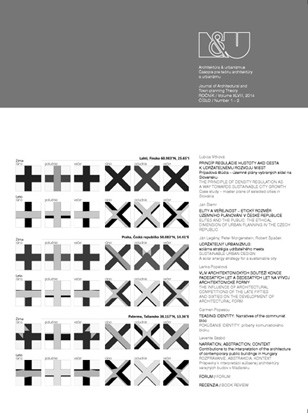UDRŽATEĽNÝ URBANIZMUS: solárna stratégia udržateľného mesta
SUSTAINABLE URBAN DESIGN: A solar strategy for a sustainable city
Author(s): Ján Legény, Peter Morgenstein, Robert ŠpačekSubject(s): Cultural Essay, Political Essay, Societal Essay
Published by: Historický ústav SAV, v. v. i.
Keywords: city, sustainability, energy cooperativeness, urban structures generating, solar radiation
Summary/Abstract: Sustainable development is a key principle in the European Union. As a moral leader and pioneer in energy-efficient buildings, the EU is carrying out the first legislative steps by implementing the Europe 2020 strategy in real life. Currently, the energy-efficient solutions for individual buildings are common knowledge; now the focus is shifting from single objects towards further, more complex systems such as urban fragments, city districts or even whole cities. By 2050, cities will accommodate about 70% of world’s population – yet even at present, they are responsible for 80% of CO2 emissions. With this in mind, it is necessary, but also convenient, to look for solutions to global environmental problems within cities. Urban layout varies with many factors, such as local climate, topology, or cultural background, all of which need to be reflected in the new concepts of 21st-century energy-efficient urban design. On this matter, we have the opportunity to learn from the past – the streets of cities emerging under Spanish influence were often laid out for conditions of greater sunlight, known as the Spanish grid. The present contribution presents a strategy for making cities more energy efficient by preferring local renewable energy sources while maintaining their identity and cultural heritage. Today we can reliably look for solutions in silico, through computer simulations. It is possible to evaluate quickly many urban variations including diverse aspects while saving considerable effort and energy. This focus of this study is on software generation of urban structures according to the position of the sun to maximize active and passive solar energy utilisation. The given approach creates nearly zero- or even plus-energy urban volumes, which are able to supply the energy surplus to their surroundings in an energy cooperation process, including even existing developments. In addition, the energy cooperation potential between basic typologies of city fragments was analysed. Solar potential was studied with regard to the two basic principles of solar energy utilization – active (photovoltaic and photothermic conversion) and passive (transmission through building openings). With regard to these principles, the unobstructed solar exposition of corresponding surfaces is crucial and deserves far more attention in urban planning processes. The generation of urban structures was conducted by an algorithm written in the Rhino script Grasshopper. It is based on similar principles as the Solar Envelope of Ralph Knowles and extends them. Urban volumes are created by the following limitations defined by borders of tangential plots, the pre-set period from 20th March to 22nd September (defined through partial research and possible energy gains) and the time interval from 9 a.m. to 3 p.m.. According to Juhani Pallasmaa, the process of creation is conducted through the connection between hand and mind. Therefore this process remains within the competence ...
Journal: Architektúra & Urbanizmus
- Issue Year: 48/2014
- Issue No: 1-2
- Page Range: 38 - 53
- Page Count: 16
- Language: Slovak

